 Your new post is loading...
 Your new post is loading...
The press will destroy Trump and Trump will destroy the press.
Consider that trust in media began falling in the ’70s, coincident with what we believe was our zenith: Watergate. We brought down a President. A Republican President.
Now the press is the nation’s last, best hope to bring down a compromised, corrupt, bigoted, narcissistic, likely insane, incompetent, and possibly dangerous President. A Republican President. Donald Trump.
If the press does what Congress is so far unwilling to do — investigate him — then these two Republican presidencies will bookend the beginning of the end and the end of the end of American mass media. Any last, small hope that anyone on the right would ever again trust, listen to, and be informed by the press will disappear. It doesn’t matter if we are correct or righteous. We won’t be heard. Mass media dies, as does the notion of the mass....
Digital news continues to evolve, pushed by a variety of innovations in recent years, from groundbreaking new technologies like virtual reality and automated reporting to experiments on social platforms that have altered campaign coverage. As journalists and media practitioners gather for the annual Online News Association Conference, here are 10 key findings from recent Pew Research Center surveys and analyses that show how these rapid digital shifts are reshaping Americans’ news habits...
What if, in the mad dash two decades ago to repurpose and extend editorial content onto the Web, editors and publishers made a colossal business blunder that wasted hundreds of millions of dollars? What if the industry should have stuck with its strengths—the print editions where the vast majority of their readers still reside and where the overwhelming majority of advertising and subscription revenue come from—instead of chasing the online chimera? That’s the contrarian conclusion I drew from a new paper written by H. Iris Chyi and Ori Tenenboim of the University of Texas and published this summer in Journalism Practice. Buttressed by copious mounds of data and a rigorous, sustained argument, the paper cracks open the watchworks of the newspaper industry to make a convincing case that the tech-heavy Web strategy pursued by most papers has been a bust. The key to the newspaper future might reside in its past and not in smartphones, iPads and VR. “Digital first,” the authors claim, has been a losing proposition for most newspapers....
A majority of U.S. adults – 62% – get news on social media, and 18% do so often, according to a new survey by Pew Research Center, conducted in association with the John S. and James L. Knight Foundation. In 2012, based on a slightly different question, 49% of U.S. adults reported seeing news on social media.1
But which social media sites have the largest portion of users getting news there? How many get news on multiple social media sites? And to what degree are these news consumers seeking online news out versus happening upon it while doing other things?
As part of an ongoing examination of social media and news, Pew Research Center analyzed the scope and characteristics of social media news consumers across nine social networking sites. This study is based on a survey conducted Jan. 12-Feb. 8, 2016, with 4,654 members of Pew Research Center’s American Trends Panel.
News plays a varying role across the social networking sites studied.2 Two-thirds of Facebook users (66%) get news on the site, nearly six-in-ten Twitter users (59%) get news on Twitter, and seven-in-ten Reddit users get news on that platform. On Tumblr, the figure sits at 31%, while for the other five social networking sites it is true of only about one-fifth or less of their user bases....
Figures released by the publication show that its social media following has grown by 44% over the last year to a total of 35.6 million. The Economist claimed this is more than any other major media brand except for The New York Times.
The Economist’s Twitter followers increased 64% to 15.7 million year-on-year between July and December 2015, while its Facebook likes grew 25% to 7.6 million and its LinkedIn group members increased by 222% to 1.4 million over the same period.
In 2015 the brand saw a 13% year-on-year rise in gross profit from its circulation business, which in part was due to culling discounted copies and attracting more subscribers who paid a premium for a bundle of print and digital editions. However, the brand’s social channels have also been a “critical component”, according to Michael Brunt, chief marketing officer and managing director of circulation at The Economist....
I recently had a long conversation with Bob Gambert, a former TV news colleague of mine. It was sparked by a comment I made on Twitter that TV newsrooms should post original video content to Facebook instead of teases for newscasts and stories. He took exception, and the discussion eventually turned into a back and forth about the state of the TV industry. He’s of the opinion that social media should primarily be used to maximize profits. TV stations should display content where they can make money.
While I respect my friend and his point of view, I strongly disagree.
You hear plenty of others in the TV news industry – particularly higher-ups – sharing my friend’s opinion. (You also see it in practice on Facebook feeds and Twitter streams every day.) That’s an incredibly bad sign. It probably sounds familiar, because it’s the same attitude most people in print had about 15-20 years ago.
THE CLIFF IS APPROACHING.
That same disruption (or whatever catchy buzzword you want to use) is coming to TV news. And a person with his or her eyes open can see it coming from a mile away....
Instead, it’s perhaps a warning to anyone taking VC. You’d better expect if you’re taking all that money, you have a plan so the VCs get a pay-off. Are you going to generate those millions invested and more so? Or do you really think someone’s going to buy you for absurd multiples based on potential value? If so, maybe the VC money makes sense. But just because some publications go that route, not all need to.
Let me conclude by saying again how sad I am to see GigaOm end so suddenly. I hope the journalists there quickly find new places to write, as I’m sure they will. I also debated writing anything about this at all, when the loss of GigaOm remains so personal to so many and is still being digested. But seeing others writing about what it all means in the grand scheme of publishing, I thought another perspective might be useful.
It's an eye-opening report that looks beyond the hype surrounding these companies. Some of them are profitable (or at least claim to be), some aren't, but all of them have raised serious cash from starry-eyed investors (e.g., $96.3 million for BuzzFeed, $110 million for Vox).
The business press tends to regard such hefty sums as implicit evidence of success and/or promise -- why would venture capitalists risk so much scratch if there was no there there? -- but Michael reminds us that all of these companies rely, somewhat harrowingly, on advertising for revenue....
"Half the money I spend on advertising is wasted. The problem is I'm not sure which half." ~ John Wanamaker, Philadelphia department store magnate
It would appear Wanamaker’s lament, repeated by many who came after him, will finally be a thing of the past. One of the grand promises of the Internet was to make advertising more efficient. To a large extent it has, but not like what’s to come for big brands. I learned that first hand last month when we didn’t meet a marketer’s unstated expectation that 100% of its display ads on Forbes.com would be in view for readers to see.
Until recently, that wasn’t a standard contractual obligation. Then, the marketer told us it had monitored in-view rates with new ad technology. The industry calls it 100% ad viewability, and compliance presents daunting challenges for every publisher.
For journalists asking why they should care, it’s simple: the news business is about to dramatically change — again.
That’s actually a good thing. Journalism must adapt – and it has — as digital publishing and social media continue to democratize the creation, distribution and marketing of content....
In a situation hostile to traditional reporting, the crowd-sourced, phone-enabled network of information that Twitter provides has proved invaluable.
...News organizations learned about the arrest and harassment of their reporters on Twitter and were able to take steps to get them out of jail. In the meantime, important information continues to flow out of Ferguson. As much as any traditional wire service, Twitter spread the remarkable work of David Carson, a photographer at The St. Louis Post-Dispatch who managed to take pictures despite being pushed around by both the police and the protesters....
There is a visceral quality to Twitter that can bring stories to a boiling point. Ron Mott, an NBC correspondent and a social media skeptic, watched Twitter turn up the heat on Wednesday and tweeted, “As powerful as our press have been through years of our democracy, social media raises temp on public officials like never before.”...
Over two days in February, digital news leaders gathered for a roundtable discussion on various ways to improve engagement with readers.
New technologies have allowed news organizations to tell stories in different ways online, but many still aren’t sure how to best tell a story or present information online. “How do we know whether an [interactive] infographic is better than some old-school bar chart?” Stroud asked.
“This is such a profound question, right? How do we know whether the things we’re doing are working or not?” But back up: How do you even define “working”? Advertisers have their own favored audience metrics, but are they the best way to measure user engagement?
The focus is often on time on site and repeat visits, according to Tom Negrete, The Sacramento Bee’s director of innovation and news operations. (The report paraphrases the participants’ points rather than quoting them directly.) But he argues newsrooms and journalists have an obligation to go further, to measure comprehension: Can an individual understand what was just read in a news story?
To try to address this very issue, The Daily Beast has introduced a value-per-visitor metric which measures how visitors to the site read, comment, tweet, share, email, click a link, and click an app, Mike Dyer, the Daily Beast’s chief digital officer, says in the report, noting there is an economic and journalistic value to each of these actions....
The Guardian has been a journalism leader. Can it build a business strategy that can match its growing global reach?
The Guardian is an enigma.
Long a storied editorial brand, it’s been propelled toward the top of global news audience, both by its open strategy and its hard-nosed journalism. In the past year, it’s broken story after story on NSA spying as the primary recipient of the Edward Snowden files. It’s also expanded its efforts in both the U.S. and Australia, enlarging its global readership. With “open” as its watchword, The Guardian has pushed into every nook and cranny of the social sphere, ascataloged here at the Lab.
But it’s also the Rodney Dangerfield of commercial journalism: It gets no respect. That contradiction — between a worldwide reach and respect and a business strategy that has seemed unstrategic — may be passing into history....
...If you’re applying a data-driven lens, as Jeff Sonderman highlighted at the Poynter Institute, you’ll need to ask a series of basic questions.“In every situation you face, there will be unique considerations about whether and how to publish a set of data,” he wrote. “Don’t assume data is inherently accurate, fair and objective. Don’t mistake your access to data or your right to publish it as a legitimate rationale for doing so. Think critically about the public good and potential harm, the context surrounding the data and its relevance to your other reporting. Then decide whether your data publishing is journalism.”...
|
The 2016 election exposed a significant crisis for U.S. democracy: the failure of our news media system.
This was an election in which false news was consumed as if true; in which polls were significantly off-base; in which journalists missed the stories both of Trump supporters, who came out in unanticipated numbers, and former Obama voters, who defied predictions to stay home.
The easy response, in the wake of these multiple failures, is to focus on one specific weakness. If only journalists had interviewed more white people in the Rust Belt! If only pollsters had looked at a different data-set! If only Facebook were not so dominant, or fake news sites so plentiful…
Such essays in search of simple answers represent no more than collective wishful thinking. Systemic failures have systemic causes. Repairs to the system may not be enough. We need to put time and resources now into transforming our news media system.
Why did we not know that voters in the Rust Belt were willing to vote for an anti-regulation racist populist, even when doing so might go against their values and self-interests? Likewise, why did news organizations fail to anticipate what appears to be a lower turnout of black voters in North Carolina (with its new voter suppression laws)?
It’s not that journalists in those communities were not doing their job; it’s that there are very few journalists left to tell the stories of those communities....
Election night is the time when everyone has CNN on. We’re the place to go for TV and digital, and we also want to be the place to go on social. We’re working on that, and we have a lot of fun things planned for election night.
We’re going to be very conscious of reaching our audiences across Facebook, Snapchat and Twitter. But we’re also going to live up to the CNN standard. We will work together as a multi-platform media company to make the calls at the right time.
We saw this play out in the primaries, where we made the calls across TV, digital and social at the exact same time. So we work together as a unit to make sure as a network, we make that call in unison. The same will happen on election night. All of social and digital and TV will be working to make sure there’s a crescendo of results as they happen....
Newsrooms are posting more of their content directly to social media platforms, but with little idea of what the rewards will be.
That insight comes from data presented by researchers at the Tow Center for Digital Journalism at Columbia University last week at a half-day event, “Digital News in a Distributed Environment.” Researchers surveyed more than 40 journalists and news media executives, from both national and local brands, as well as eight executives from Facebook, Twitter, Instagram, Google and Snapchat. They also held a roundtable attended by fifteen social media and audience editors. They found that a publisher’s business model is what determines its social media strategy – and no one solution works, said Claire Wardle, the research director at the Tow Center. While some publishers are optimistic about the new opportunities that social media provides, others feel powerless. And relationships between publishers and platforms are not always amicable, with one respondent referring to a platform as a “frenemy.”...
It sometimes looks as if the hyperlocal space is owned by commercial “pureplays” – the Yelps, Angie’s Lists and Weddings.com. These are the sites that most often seem connected to their often very vertical communities – and pull in the revenue, as documented in the new Borrell report. News sites grind out their duty coverage of local arrests, fires and traffic snarls, but how often do they capture what’s special about their towns and stir up communal sprit? And even if they do achieve that, how often do they reap new revenue from their enterprise? 30A succeeds at both. Founder and CEO Mike Ragsdale sees 30A as far more than a website. “It’s a network, it’s a brand,” he says. 30A has plenty of new about the Santa Rosa Beach communities along the Gulf Coast of Northwest Florida, including the occasional story that might not sit that well with visitors who reach for too many cool ones (“Spring Break Safety: Sheriff, Seaside Take Stand Against Illegal Activities”) But it’s also three retail stores, 30A Radio, 30A Weddings.com and 30A VideoTours.com, and more....
A relatively small group of publishers dominate Americans’ online news consumption, according to a new study by research outfit SimilarWeb, which compiled figures for the top news publishers covering both mobile and desktop audiences in 2015.
Overall, the top 10 publishers -- together owning around 60 news sites -- account for 47% of total online traffic to news content last year, with the next-biggest 140 publishers accounting for most of the other half, SimilarWeb found.The biggest online news publisher for the U.S. audience was MSN, owner of MSN.com, with just over 27 billion combined page views across mobile and desktop, followed by Disney Media Networks, owner of ESPN and ABC News, with 25.9 billion....
A record number of sites – 13 – achieved over 1m tweets of their content in March. Practically all of the top publishers grew their total significantly in March, with the top six remaining unchanged.
The BBC remain on top, with almost 5.5 million tweets. From our data, it looks as though the BBC has a well-spread out reach on Twitter, with not too many ‘blockbuster’ stories each month. Instead, they seem to get high levels of engagement by minutely splitting their content verticals for different audiences. That’s something that all publishers try to do to a certain extent, but few match the resources and breadth of coverage of the BBC. From cricket to cookery, there’s a BBC Twitter account for practically everyone....
With content on-demand and ever-available, traditional loyalty is going theway of the homepage. Continuing to optimize for increased pageviews no longer makes business sense.
In this age of transformation, the ability to create new and differentiated methods of sustained growth has become more important than ever. Only the innovative and agile prevail.
Below is a framework, followed by observations on some of the most innovative media organizations. Each example demonstrates an insight on how to shift from using traditional marketing practices alone, to a holistic approach for growing and retaining users....
You could argue that it doesn’t matter. That these journalists are well established and don’t need online audiences. Perhaps. But I think they’re missing out on the medium that allows you to broaden your scope of thinking, test ideas in an online marketplace and allow fans to have a small sliver of unfiltered access to you. It’s a two-way world. Too many NY Times oldline journos are one-way. Shame. And when you look at the 43 people Brooks follows it’s probably about 35 of his fellow NY Times colleagues. And Marc Andreessen. At least there’s that. Marc, maybe you can break through?...
Ever since the web was invented, newspapers and other media entities have had to continually expand their view of who their competition is: in the good old days it was other newspapers, and then TV, and then after the web it became other news websites, or maybe Yahoo or Google. But even now, their perspective on that competition may still be too narrow — as my friend Om has argued, they are competing with anything that captures a reader’s attention. And I would argue that they are competing with any service that fills an information need.
I started thinking about this again earlier this week, when a link to an old blog post by journalist/programmer Stijn Debrouwere showed up in my Twitter stream, posted and retweeted by multiple people. I couldn’t track down exactly where it came from, but I’m glad it appeared, because it reminded me of how much sense it made in 2012 when it was first published — and how much sense it continues to make.
Debrouwere’s essay is simply called “Fungible.” Fungibility is an economic term that is used to describe products or services that are interchangeable; in other words, if consumers don’t really care whether they get Product A or Product B, then those two things are said to be “fungible.”...
I learned many lessons during my eight years at AOL, none bigger than this: don't let any measure of success blind you to what's in front of your face. In the early 00s, AOL raked in the dial-up dollars.
...For me, statistics like these confirm the news business is on another collision course. A decade or more ago, journalism collided with the freedoms of digital publishing. Next came the collision with social media. Now, it’s colliding with mobile, social and the visual Web. Journalists should take note. Basically, they’re livelihood depends on revenue from paying subscribers and ad dollars. About 75% of ad dollars at media companies with magazines or newspapers still come from those properties (at FORBES it’s down to 45%). Often, it’s even more than that. I suspect traditional revenues at TV and cable networks with big Web sites account for the same.
Mobile ad rates are often one-third of desktop rates, now the main source of digital revenues. So, if traditional ad revenues remain flat at best, if digital pay walls work for only the few, if more news is consumed on smartphones, well, the math doesn’t tell a pretty story unless mobile solutions are found....
Marc Andreessen is famous as an extremely successful investor in Silicon Valley startups and that means he knows a thing or two about a thing or two but probably not the business of news. His recent analysis of the news media business has not impressed those in the news business.
Ryan Chittum at the Columbia Journalism Review said Andreessen “has some outlandish predictions about the future of the journalism business.”
He picks apart Andreessen’s claim that the news industry will grow by 10 times to as much as 100 times over the next 20 years....
"We're limiting the opportunity for our readers to understand all the intersecting impacts by reducing context to a few paragraphs of background."My prediction isn’t particularly snazzy. It doesn’t require drones or sensors or wearables. It gets back to common sense, highlighting our role as an industry in creating informed citizens. 2014 will be the year of contextualization.News organizations have so far been bad at contextualizing information. We publish articles on a 24-hour news cycle and expect readers to figure out how to connect the dots on their own. We use one sentence near the top of a story to rehash concepts we may have covered at length in previous articles. Rarely do readers follow a story from the beginning — but when they jump in at the middle, we don’t help guide them through what they’ve missed. And we essentially write new content that we then throw away at the end of the day. Content shouldn’t die by design....
|



 Your new post is loading...
Your new post is loading...







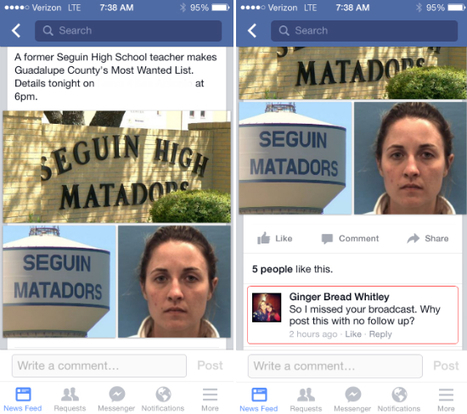





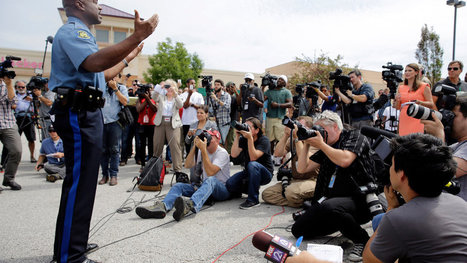
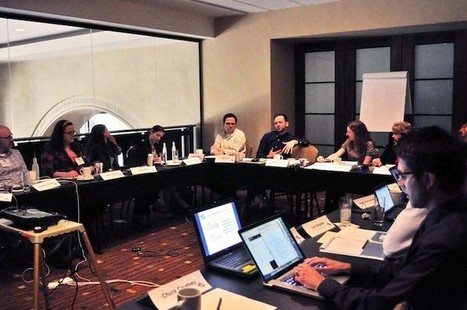
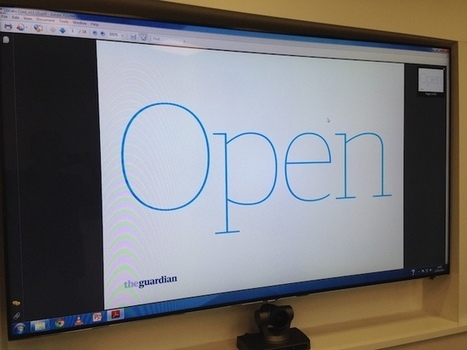



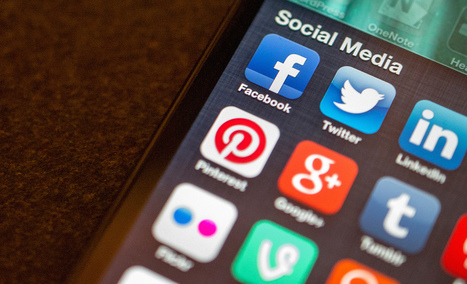

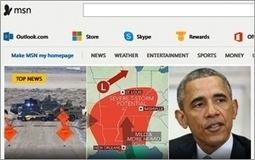
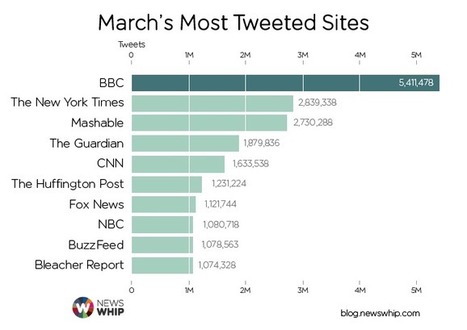

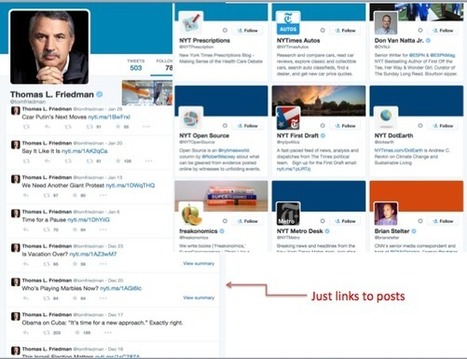


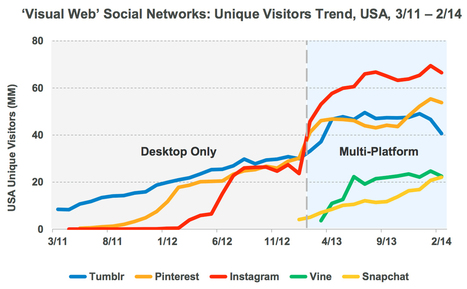







Jeff Jarvis writes a powerful post about the death spiral of Trump and the media.